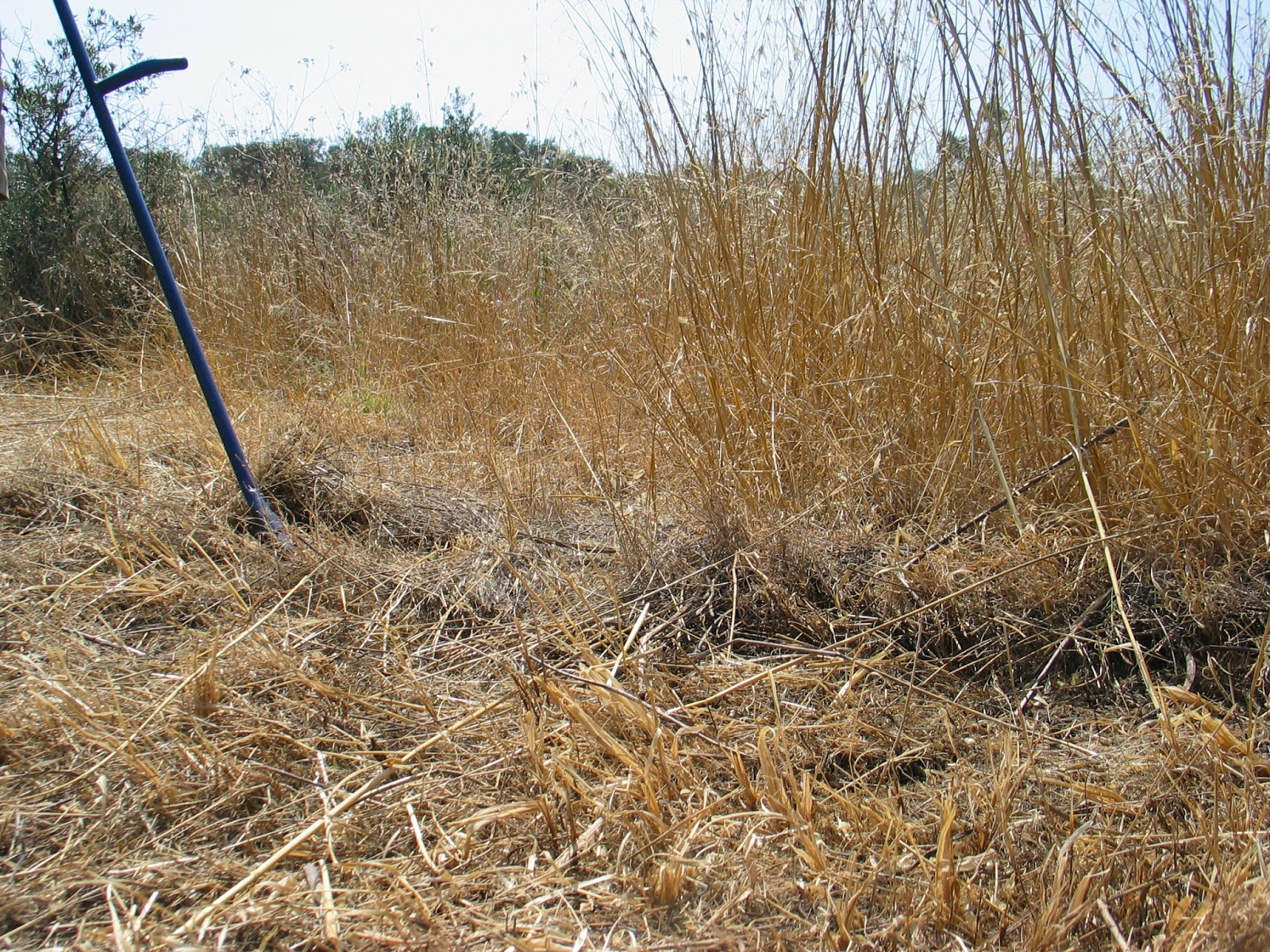Now green grass is growing through the dry. And luckily we have not seen fires in the neighborhood yet. We are lucky. We are very lucky.
 |
| Even in a rainy summer this grass turns into hay while it is on the land still. |
 |
| The new grass has been growing over the stubble already. If the weather had been dry, as it usually was, this would not have happened. |
"In the beginning of the summer I did look up to the work very much, when I saw that high crop." he confesses. "But it is okay afterwards. A sharp scythe, calm with work and everyday a little part." he says a bit relieved.
This year we fenced off a small part of the land at the river for the hay harvest. The sheep have not been grazing there. This summer, Hendrik wants this whole part to be mowed.
 |
| January 2014. The grass that remained became brown. |
 |
| April 2014. High grass. |
 |
| June 2014. High hay with new greens in between, because of the rain. |
Bacteria are needed to include the food from the fungi into the soil. For this these bacteria need moisture. Moisture which was not available most of the time.
This old crop now is a molded, a crumbly layer lying under the new high crop that grows through it. Despite the rains in the last winter, it is not completely digested and perished. The conditions in the Alentejo prove, even after the rains, to be too dry for a complete incorporation into the soil. And this molded layer makes mowing more difficult.
Therefore, we now fence off a small part of the land that we mow for sure. The other part is for the sheep.
Stella.
 |
| In fertile soil. |





Geen opmerkingen:
Een reactie posten